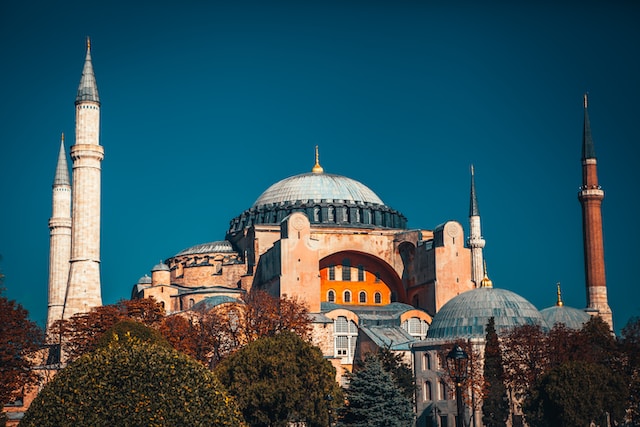
When you think about amazing experiences in Turkey, visiting the Hagia Sophia inevitably comes to mind. This architectural marvel, with its complex history and awe-inspiring beauty, offers a unique insight into the rich cultural tapestry of Istanbul. Here are ten fascinating facts about this beloved landmark:
1. A Building of Many Firsts
The Hagia Sophia is not just one of the oldest surviving buildings in Istanbul, but also one of the first large-scale domed buildings in the world. Its remarkable dome spans over 100 feet and was the largest in the world until the completion of the Florence Cathedral in Italy in the 15th century.
2. A Tale of Three Constructions
Believe it or not, the Hagia Sophia you see today is actually the third building constructed on the same site. The first two, built in the 4th and 5th centuries, were destroyed during riots. The third and current building was completed in 537 AD during the reign of Byzantine Emperor Justinian I.
3. Changing Religious Affiliations
Throughout its history, Hagia Sophia has served as an Eastern Orthodox Cathedral, a Roman Catholic Cathedral, a mosque, and now a museum. Its transformation reflects the changing tides of Istanbul’s history, adding layers to its story and allure.
4. The Intriguing Name
‘Hagia Sophia’ translates to ‘Holy Wisdom’ in Greek. The name, however, does not refer to a saint named Sophia, but to the divine wisdom of God, a central concept in the Orthodox Christian tradition.
5. The Mystery of the Marble
The Hagia Sophia’s stunning interior features a variety of marbles sourced from all over the ancient world. Interestingly, some of these marble types are so rare that they’re virtually extinct and can’t be found anywhere else today.
6. The Byzantine Mosaics
The Hagia Sophia houses an array of stunning mosaics that date back to the Byzantine era. These mosaics, depicting religious scenes and figures, were plastered over when the building was converted into a mosque but were later uncovered and restored.
7. The Sultan’s Lodge
When the Hagia Sophia was converted into a mosque, a ‘Sultan’s Lodge’ was added. This elevated platform allowed the sultan to attend services in privacy, a unique feature that adds to the building’s architectural richness.
8. A Blend of Architectural Styles
The Hagia Sophia combines elements of Byzantine and Islamic architecture, reflecting the cultural shifts it has experienced. The original Byzantine structure with its grand dome and ornate mosaics blends seamlessly with Islamic features like the minarets and calligraphic roundels, creating a unique aesthetic.
9. The Viking Runes
Among the many historical treasures of Hagia Sophia is a runic inscription made by a Viking mercenary. This graffiti, dating back to the 9th century, attests to the wide-reaching influence and appeal of this majestic building.
10. A UNESCO World Heritage Site
In 1985, the Hagia Sophia was designated a UNESCO World Heritage Site. Today, it stands as a monument to Istanbul’s historical and cultural significance, drawing millions of visitors every year.
In conclusion, the Hagia Sophia is not just an architectural wonder; it’s a testament to Istanbul’s rich history. It’s a structure that carries the weight of empires, religions, and civilizations within its walls. Exploring the Hagia Sophia and uncovering its many secrets is undoubtedly one of the most rewarding “turkey things” to do. This majestic edifice invites you to step back in time and immerse yourself in a narrative that transcends centuries, a narrative that continues to shape and define the spirit of Istanbul.





